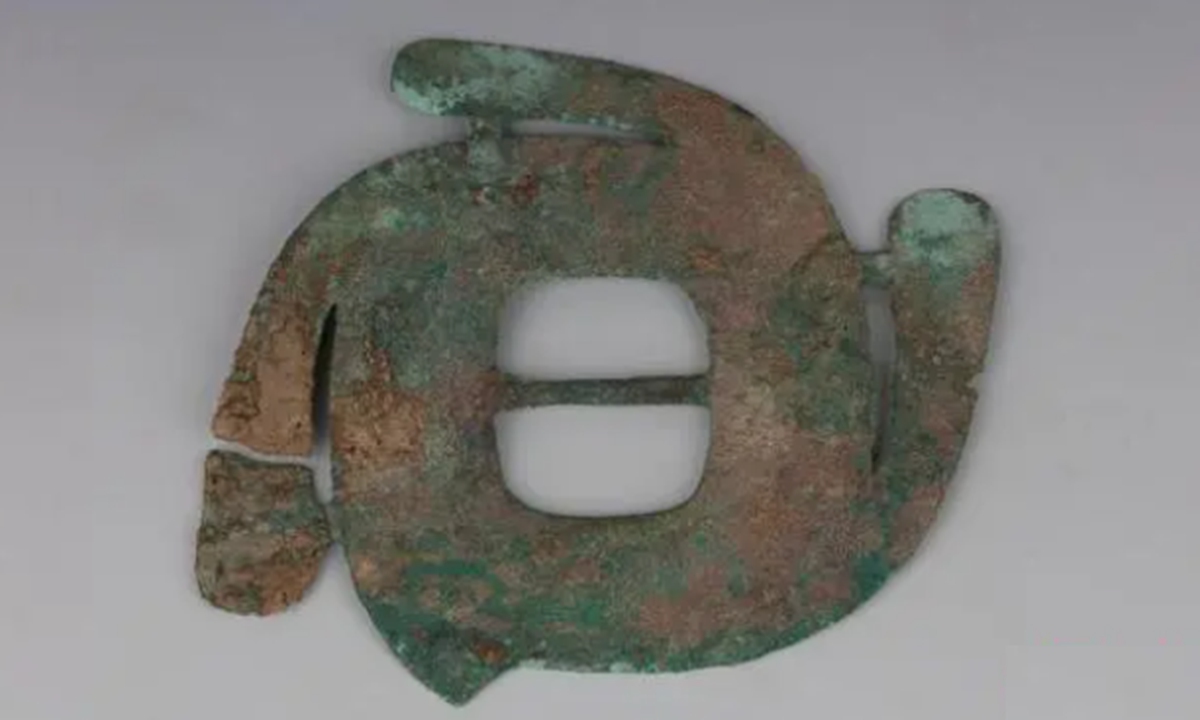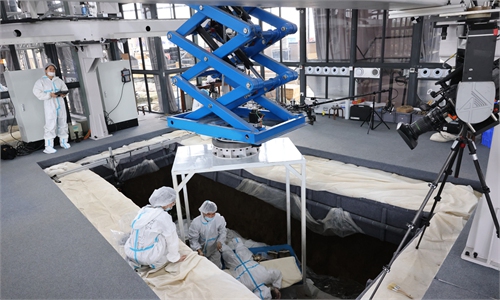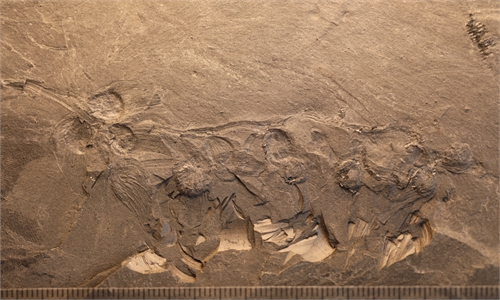ARTS / CULTURE & LEISURE
3,000-year-old relics unearthed at Western Zhou Dynasty tombs

Photo: Screenshot
Jade and other ancient relics have recently been excavated from 45 Western Zhou Dynasty (1046BC-771BC) tombs in Baoji city, Northwest China's Shaanxi Province, revealing details about the country's handicrafts art 3,000 years ago.Led by the Baoji Institute of Archaeology, the project has unearthed 328 relics, including precious jade, agate, pottery and bronze remains. These relics were scattered among 45 newly excavated Western Zhou Dynasty tombs. A total of 77 ancient tombs have been discovered so far in the area, which is located along the Dongsha River.
A bronze xuanji, a flat-disk shaped device traditionally made from jade that was used for astronomy in ancient times, was discovered among the relics, revealing a "cultural connection" between the Western Zhou site and the Neolithic Dawenkou culture, archaeologist Xue Feng, told the Global Times.
Although being made of bronze, the xuanji discovered in Baoji looks similar to those made of jade found at the Dawenkou site.
Xue told the Global Times that use of the xuanji originated with the Dongyi people, the ancient ancestors of today's Han ethnic people.
Signs of the Dawenkou culture are not the only cultural connections found at the site. A jade cong with similar features to an object found at sites connected to Zhejiang's Liangzhu culture was also discovered. Cong, a tall rectangular jade that had a circular tube carved inside it, was used by ancient Chinese as part of religious ceremonies.
These discoveries clearly show the trajectory of ancient Chinese civilization.
"The Liangzhu culture expanded northward to meet the Dawenkou culture, and the Dawenkou culture further expanded westward. The jade cong unearthed from the tomb in Baoji shows Chinese culture's 'westward' development," said Hu Wanglin, an associate researcher at the Baoji Institute of Archaeology.
Those tombs in Baoji were once a public cemetery for the Western Zhou people. The site has also produced pottery remains with features similar to the pottery of the Taosi culture.
Located in Shanxi Province, the Taosi culture, which originated 3,900 to 4,300 years ago, is known for its pottery culture. It was included as one of the sub-projects of the national program dedicated to tracing the origin of Chinese civilization.
Hu said the relationship between the newly discovered Baoji tomb site and Taosi culture is worth further study. He also noted that the site may shed light on the origin of China's early Zhou Dynasty.
"Traditionally, scholars believe early Zhou culture originated in central or southern Inner Mongolia, and then encountered the Taosi culture. The Taosi culture inspired relics we discovered this time demonstrates this point," Hu noted.



